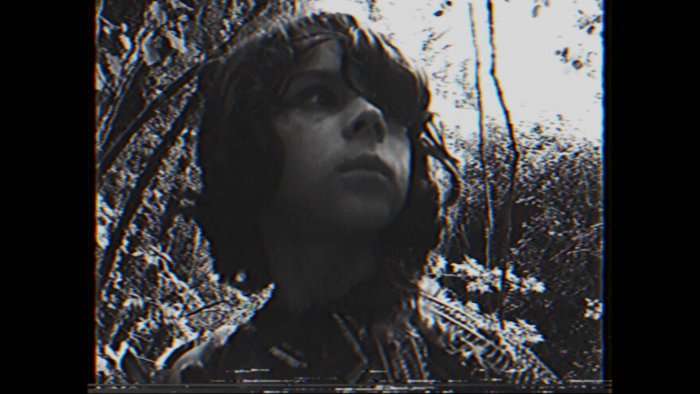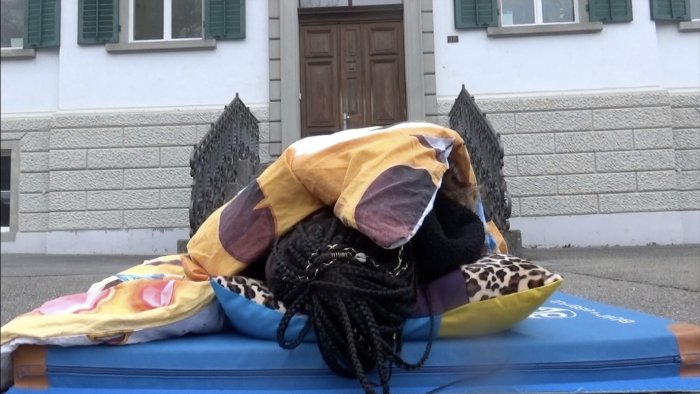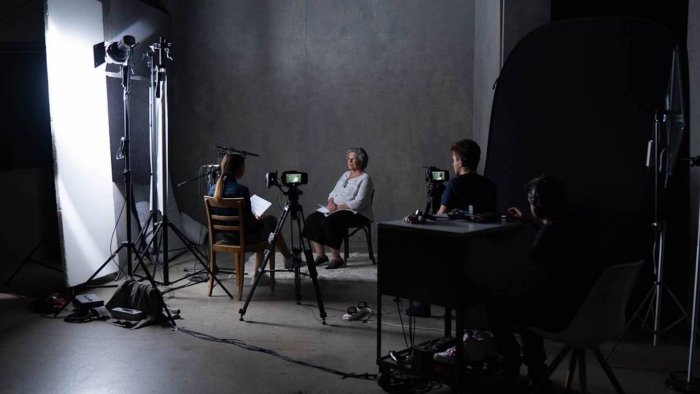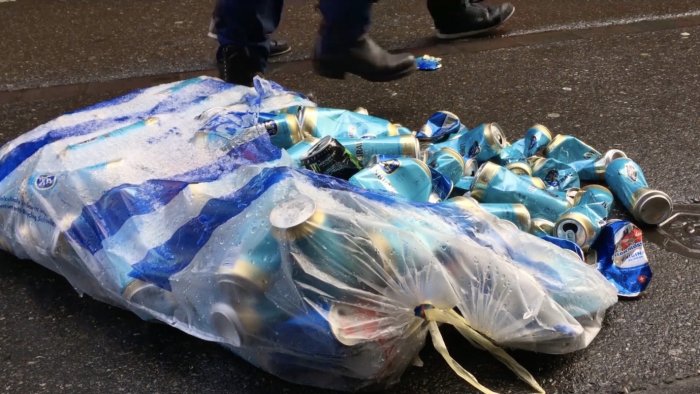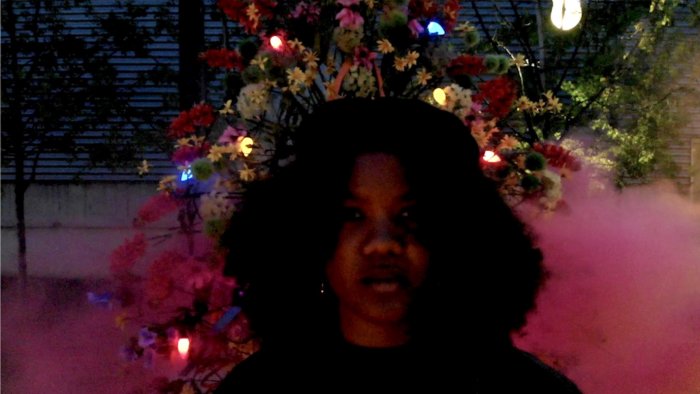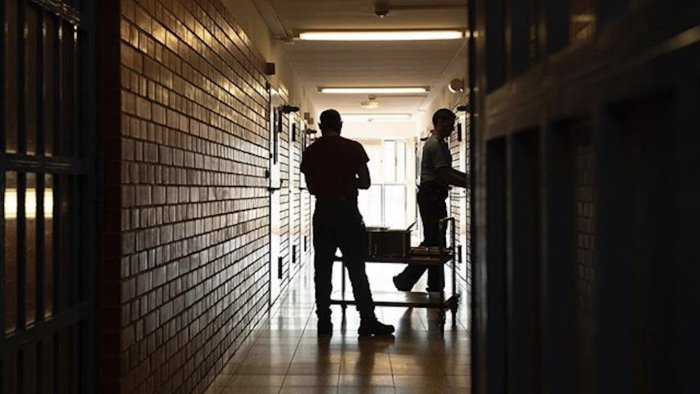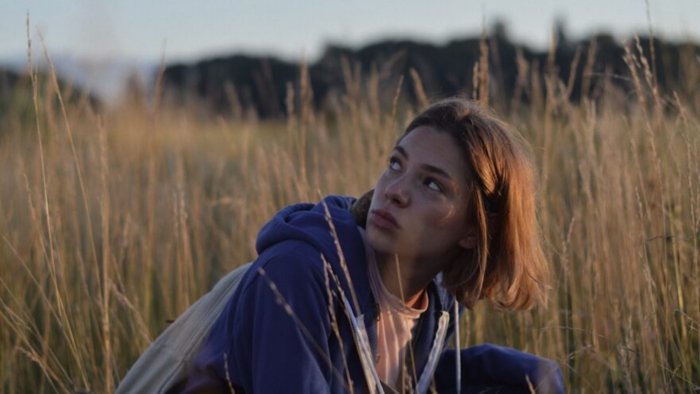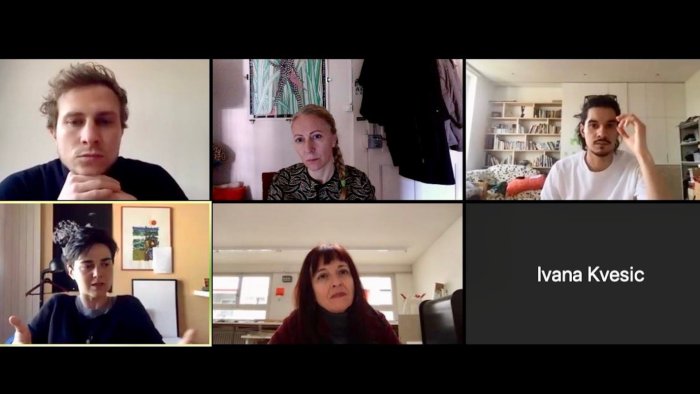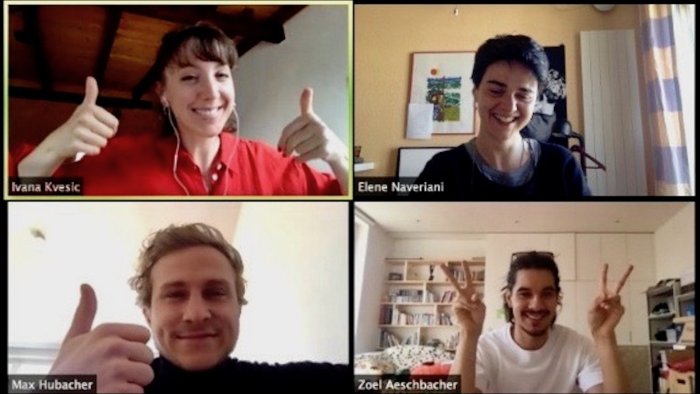Schweizer Jugendfilmtage 2020
A selection of wonderful discoveries at the Schweizer Jugendfilmtage 2020 after its entirely online version, curated by Ruth Baettig and Giuseppe Di Salvatore, with contributions from Giuseppe Di Salvatore (GDS) and Laura Davis (LD).
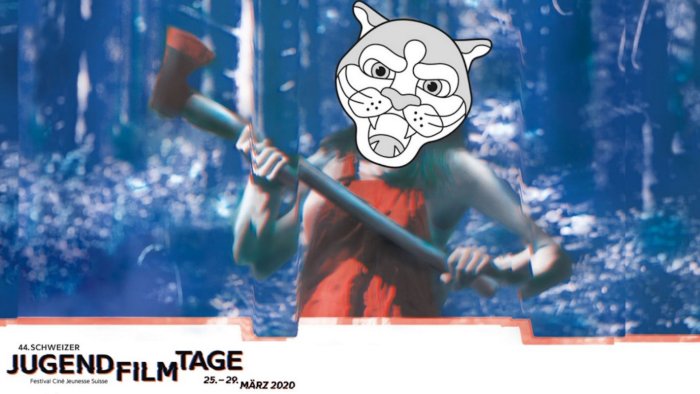
Categories A and B
Nico Juchli | CH 2019 | 3’24’’ | Schweizer Jugendfilmtage (Cat. A)
A clear idea of the power dynamic of groups and the eternal struggle of the individual in its “class” is pushed forward by Nico Juchli through an astonishing control of the image in a minimalist framework. The dramaturgic tension of the short film is entirely sustained by accurate editing, which is oriented to a crescendo, up to the final expressive scene, in slow motion, that preludes the screaming climax. A very promising work. (GDS)
Noah Bernasconi | CH 2019 | 3’46’’ | Schweizer Jugendfilmtage (Cat. A)| 2nd Prize (Cat. A)
The choice of an image with the grain of an old TV (or VHS) setting brings decisive charm to a short film that, for this reason, gets the flair of a souvenir journey into childhood. The romantic theme of the wild hero against the family rules displays the classical contraposition of nature and culture, not without a sense of humour that largely rests upon the explicit recourse to a home-made set and “special effects”, which recalls the beginnings of cinema such as in Georges Meliès’ films. (GDS)
5. Klasse Malik, Langnau am Albis | CH 2019 | 8’55’’ | Schweizer Jugendfilmtage (Cat. B) | 1st Prize (Cat. B)
There is on original idea about money that should go to sleep, a sort of wish of suspension of the needs and the burden that money (can) represent to a younger generation. To this, the group of children adds the performance of them sleeping on the courtyard of the school and other performances more. The overlapping of layers multiplies, and what initially seems to be incoherence, mostly through an apparently chaotic editing, reveals itself to be the main source of unmistaken creativity. Money, go to sleep. is a joyful, multi-oriented work, where our puzzled question marks become paths of discovery and imagination. An odd yet incredibly refreshing proposition if seen through the lens of a giant “why not?”. They learn, we learn. (GDS)
Category C
Daniela Wildi | CH-FR 2019 | 23’ | Schweizer Jugendfilmtage (Cat. C) | 1st Prize (Cat. C)
Daniela Wildi presents a formally classical documentary work on the barbaric practice, usual in Switzerland until the Sixties, to reallocate unwished children for work in other families under conditions of slavery. Thanks to a very precious work of casting, the rigorous filmic proposal highlights the direct witnesses of a phenomenon that still today marks no less than 50.000 persons, who often lack acknowledgement or compensation. Through well-chosen frames, a perfect balance of empathy and distance, and an intriguing editing that dares to overcome the level of the individual in order to create a choral discourse, «J’étais un enfant qu’on ne voyait pas» not only informs on the past and the present of this phenomenon, but moreover works performatively as a form of relief for the interviewed persons. A “therapeutic” story of sorrow, which Switzerland does not seem to be disposed to hear and accept yet. (GDS)
June Schädelin | CH 2018 | 3’24’’ | Schweizer Jugendfilmtage (Cat. C) | 3rd Prize (Cat. C)
This is definitely more than a collage work. The images that convey an overt criticism of our consumerist society are juxtaposed with images that we cannot avoid recognizing as affecting our own daily life. The result is an intimate experience where the plastic and the trash are melted within ourselves. The subtle editing, which is highly attentive to the sound track, displays a constant crescendo in the tempo up to coming close to subliminal perception where we lose control of the image itself, thereby making us capitulate in front of this sort of plastic incorporation. (GDS)
Category D
Serafina Ndlovu, Verena Korrodi | CH 2019 | 1’48’’ | Schweizer Jugendfilmtage (Cat. D) | 1st Prize (Cat. D)
In less than two minutes Bruja shows a perfect synthesis of word and image, between the genre of the music clip and the practice of slam poetry. The combination of these two layers eschews any form of mutual description: sounds and images play together in a dialogue of resonances. Both the performative and the symbolic dimension strengthen the basic feminist and anti-racial claim for independence, which dominates the image in its excesses and disturbances. (GDS)
Max Carlo Kohal | CH 2019 | 19’06’’ | Schweizer Jugendfilmtage (Cat. D) | 3rd Prize (Cat. D)
We need some time to understand that the boys witnessed in Max Carlo Kohal’s film are detained minors. This slow approach is effective as it passes through stories of “normality”, where we feel how fragile is the line between normality and deviance. The filmic work, which reveals the great trust Kohal could get from the inmates, never takes a judgmental position – an attitude that is underlined by Kohal’s choice to completely avoid the “easy” cinematic use of faces. The combination of body proximity and voice over creates a deeply intimate experience, at the same time communicating a sense of deprivation through the absence of face expressivity. The final absence of image tout court seems to suffocate the destinies of their life paths, that are straight, sly and hesitant together. (GDS)
Alexandre Schild | CH 2019 | 16’03’’ | Schweizer Jugendfilmtage (Cat. D)
In an almost obsessive way, the film insists on Juliette’s inner life, an obsession that actually expresses nothing but the strong self-concentration of teenagers like her. In a convincing continuity of real, projected and fantasised images, Juliette’s self-perception is disclosed in a spiralling narrative apparently without any output but the emergence of her victimism. The final switch and liberation is accompanied by a very long disco scene, which reveals Alexandre Schild’s praiseworthy propensity to take on daring filmic choices. (GDS)
Category E
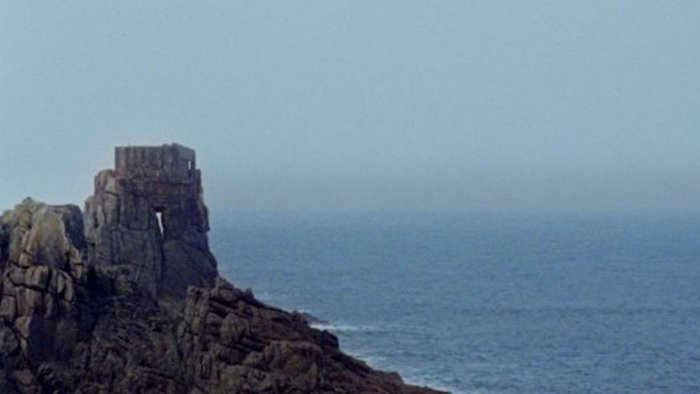
Anaïs Moog | CH 2019 | 13’09’’ | Schweizer Jugendfilmtage (Cat. E) | Pardino d'argento at Locarno Film Festival 2019
Anaïs Moog’s Pardino d’argento winning Tempête Silencieuse begins by establishing a dialogue with La legende de la morte (1921) by Joseph Cuillandre. The twentieth-century text explores the Breton rituals that mourn those missing at sea. It speaks about the mortuary rite of proëlla that was practiced on the island of Ouessant. Moog’s film encounters a Tunisian mother and her daughter who mourn their son and brother, Osama, after his journey to Europe, the fate of whom is still unknown to them. She narrates their moment of uncertainty with tenderness and cautiousness, selecting testimonies that do not communicate Osama’s journey but waves of consciousness that surface. The fragments that wash ashore form a dialogue with the images. «I hate the sea, I never want to see it again», is one. This sentiment is paired with a refusal to portray a seascape through the 4:3 aspect ratio. We watch the waves in motion and, in picturing them, Moog’s cinematography articulates cinema as arriving too late to capture the moment, but just in time to articulate the feeling. (LD)
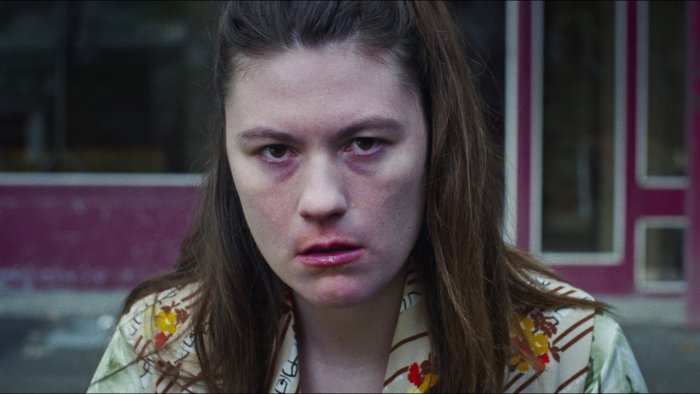
Nora Longatti | CH 2019 | 10’45’’ | Schweizer Jugendfilmtage (Cat. E)
Nora Longatti’s bloc b brings to mind Julia Kristeva’s Powers of Horror, more specifically her notion of the “abject”. In this brief gross-out work the inhabitants of a housing estate in the satellite city of La Bourdonnette explore their corporeal state through lengthy make-out sessions, oyster shucking and the messy issue of nosebleeds. Longatti articulates this through an approximation between the tonality of urine against gravel, saliva against brick. The physicality of the body is contrasted against the repressive planes and geometries of the brutalist architecture. The heavy concrete perhaps relates to a stage in psychosexual development in which we repress our desires and disgusts. The inhabitants of La Bourdonnette do not separate themselves from the animal though, instead indulging in the primal urge to pick, lick, vomit, excrete and urinate. At one moment the image cuts abruptly to a woman ejecting what looks like a segment of lemon from her mouth and then to her squeezing its juice into her vagina. The film calls into question how we are alive, or, more pertinently, how urban planning is designed to make us forget we live. (LD)
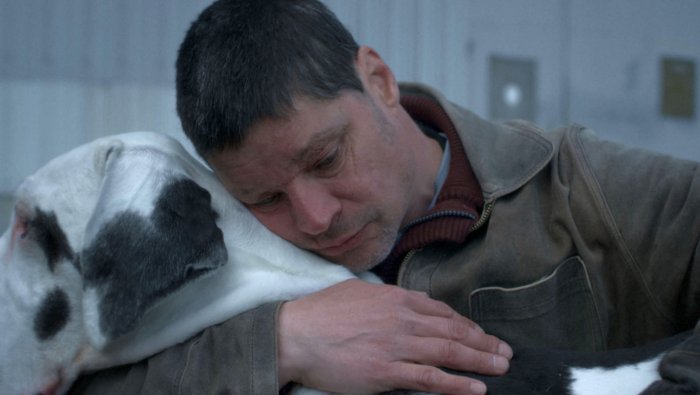
Juliette Korbel | CH 2019 | 17’25’’ | Schweizer Jugendfilmtage (Cat. E) | 1st Prize (Cat. E)
In this neat seventeen minutes, Pavel, the guardian of a decommissioned factory is surprised by a young engineer who arrives one day to turn its life support off. This short traces Pavel’s emotional arc as he finally learns to let go of the past. This is illustrated through companion characterisation: Pavel is slow, his gait slouched, his face scarred, his breathing irregular. The young engineer, in contrast, is clean-shaven and trim, speaks with an educated intonation, vaguely unthreatening in his slenderness but ultimately there to draw all Pavel knows to an end. However, the most astounding performance is in the way the operations of the powerless power plant are directed. As the camera pans further out, we see Pavel becoming dwarfed by his surroundings. The factory no longer has a heartbeat. The sublime Alpine surroundings make for an overwhelming backdrop. The man cannot fight what terrifies him and learns to simply love his dog. (LD)
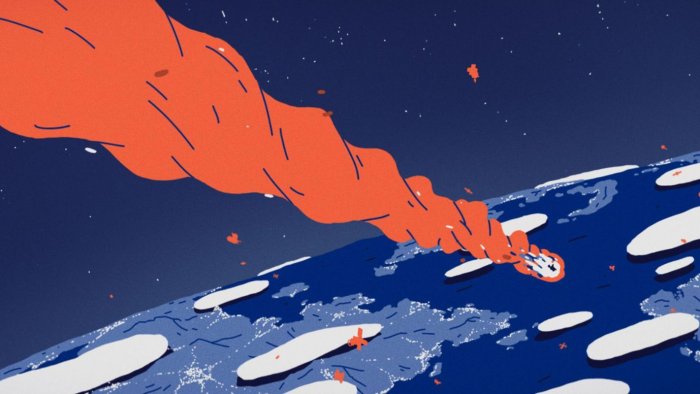
Frederic Siegel, Benjamin Morard | CH 2019 | 9’22’’ | Schweizer Jugendfilmtage (Cat. E)
The Lonely Orbit offers a glimpse into the life of a satellite technician in minimal salmon pink, navy blue and grey animation. As his orbits the world, the technician keeps loneliness at bay by texting his friends. However, after neglecting his duties a satellite falls from orbit which causes the world’s network to collapse and he must find another way to remain in touch. The animated flatness conveys the disorientation of the modern life of imagery. The opening shot is of the inside of a pub only for us to realise, as the screen falls away, that we are merely looking at this from a phone screen. Many encounters and experiences lose their reality. The main character’s co-workers behave in careless ways as the structure of his surroundings falls away. The animation’s rapid pacing evokes the hyper-acceleration of our global interconnectedness, where the worlds of leisure and labour are often only a flicker of a screen apart. The surrealist film stands out as something both extremely distant and incredibly relatable. (LD)
Text: Giuseppe Di Salvatore, Laura Davis
...the online Jury. Coronavirus oblige!
Text: Giuseppe Di Salvatore, Laura Davis

